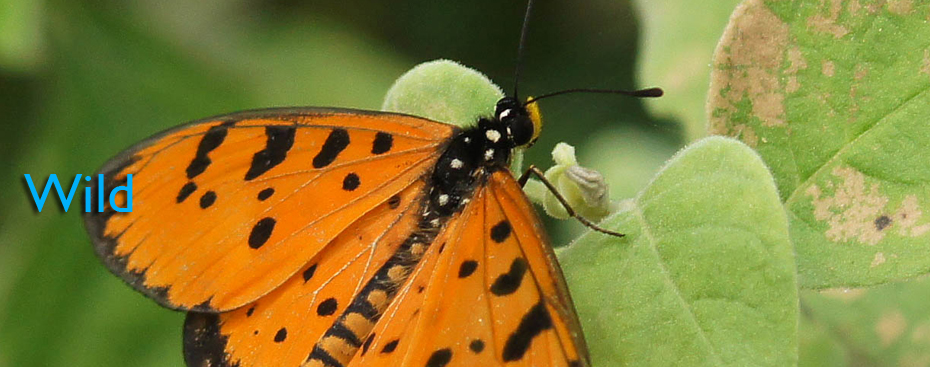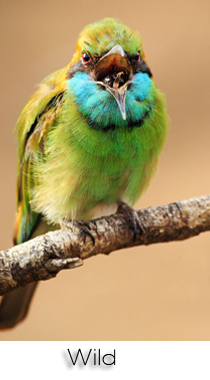Closely following the Buddhist tradition of conservation that dates back over 2,000 years, Sri Lanka features no fewer than nine national parks and seven bird sanctuaries. Among the 12, 259 endangered species listed by the World Conservation Union, 43 can be found in the island's national parks. Sri Lanka though small in size is one of the few places on earth where the world's largest land and sea mammals can be seen in a day. Home to the inimitable Asian Elephant, Sri Lanka's southern Ocean waters are the playground to the giants of the sea- the docile Blue Whales.
Yala

- 6 Yala National Park is the most visited and second largest national park in Sri Lanka. Actually it consists of five blocks, two of which are now open to the public; and also adjoining parks. The blocks have individual names also, like Ruhuna National Park for the (best known) block 1 and Kumana National Park or 'Yala East' for the adjoining area. It is situated in the southeast region of the country, and lies in Southern Province and Uva Province. The park covers 979 square kilometres (378 sq mi) and is located about 300 kilometres (190 mi) from Colombo. Yala was designated as a wildlife sanctuary in 1900, and, along with Wilpattu it was one of the first two national parks in Sri Lanka, having been designated in 1938. The park is best known for its variety of wild animals. It is important for the conservation of Sri Lankan Elephants and aquatic birds. There are six national parks and three wildlife sanctuaries in the vicinity of Yala. The park is situated in the dry semi-arid climatic region and rain is received mainly during the northeast monsoon. Yala hosts a variety of ecosystems ranging from moist monsoon forests to freshwater and marine wetlands. It is one of the 70 Important Bird Areas (IBAs) in Sri Lanka. Yala harbours 215 bird species including six endemic species of Sri Lanka. The number of mammals that has been recorded from the park is 44, and it has one of the highest leopard densities in the world. The area around Yala has hosted several ancient civilisations. Two important pilgrim sites, Sithulpahuwa and Magul Vihara, are situated within the park. The 2004 Indian Ocean tsunami caused severe damage on the Yala National Park and 250 people died in its vicinity. The number of visitors has been on the rise since 2009 after the security situation in the park improved.
Kumana
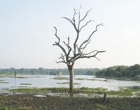
- Kumana National Park in Sri Lanka is renowned for its avifauna, particularly its large flocks of migratory waterfowl and wading birds. The park is 391 kilometres (243 mi) southeast of Colombo on Sri Lanka's southeastern coast.[1] Kumana is contiguous withYala National Park.[2] Kumana was formerly known as Yala East National Park, but changed to its present name in 5 September 2006.
Vilpaththu

- One o f the main national park situated in the North Central province. Vilpaththu National Park which has been closed for several years owing to the north-east war is now opened. Vilpattu is the biggest national park in Sri Lanka covering around 500 sq. miles. Around thirty sand-rimmed freshwater lakes surrounded by grass and high forest are where the animals and birds are best seen. There are many Villu and lakes at Vilpaththu. This is identified as the main topographical feature of the Park. They are often flat and basin like while containing purely rain water. Vilpaththu national park is the oldest and perhaps the most important protected area in Sri Lanka . It's fauna and flora are representative of the dry lowland zone. It is unfortunate that many species living in the park are threatened species
Wasgamuwa
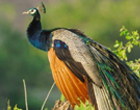
- Wasgamuwa National Park is one of the many national parks in Sri Lanka. It earned its name as a national park during the Mahaweli Development Project in 1984 in which it provide refuge to countless displaced wild animals. Originally it was supposedly considered as a nature reserve in 1938, and then in the early 1970's the park was regarded as a strict nature reserve. This is one of the places in Sri Lanka where elephants can be seen in very large numbers. It also rises up to prominence for bird-watchers too , and is also considered as one of the Important Bird Areas in Sri Lanka. The name of Wasgamuwa is a derivative of two words Walas Gamuwa where Walasa is the Sinhala word for the Sloth Bear ( who are also present but in very small numbers ) and Gamuwa which means wood. The park is simply just about 225 km away from the commercial capital of Sri Lanka.
Udawalawe
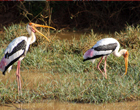
- Established during 1972, with a dry land of area 119 square miles. It generally has a very humid but warm climate, very famourable for most species that live there. It is home to even plants such as Satin trees, ebony , etc. However the main attraction is the elephants of which this reserve is very famous for. The endangered Sambar deer and leopards along with a lot of mammals can be seen while on Safari. Birdwatching is done here to see the Sri lankan spurfowl an endemic species along with a lot of other birds.
Maduru oya
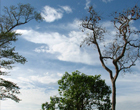
- Maduru Oya National Park covers parts of 3 districts, namely Polonnaruwa, Badulla and Ampara. The park covers more than 50,000 hectares and was established on 1983. The park has a archeological significance as well, where Buddha statues are found within the park. The park is home to many animals due to its vast area. Elephants, reptiles, birds, and leopards are a few among the many animals residing in the park. This national park is one of the main bird-watching sites in the country, including aquatic birds such as the white bellied sea eagle.Wild animals that roam the park comprises elephants, bears, leopards, sambhur, water buffalo, purple monkey, variety of deer, reptiles etc. Aquatic birds thriving, associated with the water bodies here are numerous as the white bellied sea eagle, great cormorant, little cormorant, painted stosk.. Omer species of birds are the Sri Lankan jungle fowl, tailorbird, white ramped shama, black hooded oriole, red faced malkoha etc.
Bundala
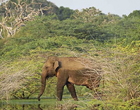
- Famous for its aquatic bird life, Bundala is located at South-east os the country. A handful of elephants reside here along with reptiles, birds and mammals. Bundala is very famous for its crocodiles , its is the only place where you can get a glimpse of both species (the mugger and the Estuarine) that live in Sri Lanka. Aquatic birds such as the black-necked stork , pelicans and other birds including birds who have migrated if you visit the park during the end of the year. The endangered sloth bears, leopards, sambar and barking deer sightings are an integral part of making your visit to the park memorable.
More Wild
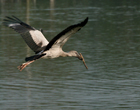
- Maduru oya - Maduru Oya National Park covers parts of 3 districts, namely Polonnaruwa, Badulla and Ampara. The park covers more than 50,000 hectares and was established on 1983. The park has a archeological significance as well, where Buddha statues are found within the park. The park is home to many animals due to its vast area. Elephants, reptiles, birds, and leopards are a few among the many animals residing in the park. This national park is one of the main bird-watching sites in the country, including aquatic birds such as the white bellied sea eagle.Wild animals that roam the park comprises elephants, bears, leopards, sambhur, water buffalo, purple monkey, variety of deer, reptiles etc. Aquatic birds thriving, associated with the water bodies here are numerous as the white bellied sea eagle, great cormorant, little cormorant, painted stosk.. Omer species of birds are the Sri Lankan jungle fowl, tailorbird, white ramped shama, black hooded oriole, red faced malkoha etc. .
- Minneriya National Park Covers an impressive area of more than 8000 hectares between Polonnaruwa and Habarana. Home to elephants, leopards and deers providing them with excellent habitats of dense shrubberies and trees along vth a vast grassland. The non-living attraction of the park is the tank built by King Mahasena during the 3rd century before christ. Cold-blooded animals also reside in this park namely , amphibians, reptiles and even fish, and like most of the parks this is another bird-watching paradise with over 130 species of birds. One of the best places to visit for all those nature enthusiasts.

